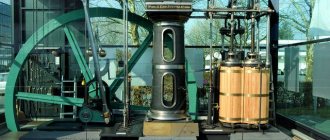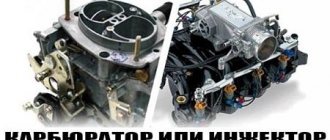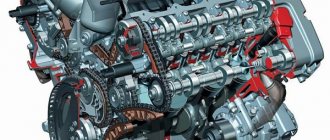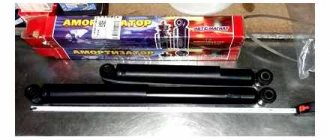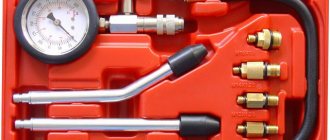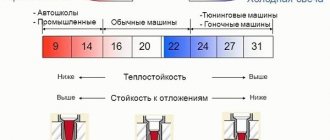March 15, 2021 Lada.Online 24 563 13
At the beginning of 2021, AVTOVAZ introduced a new 8-valve 1.6-liter engine (VAZ 11182 or AR16SEg2), which first appeared on the Lada Largus FL and will later appear on the Lada Granta FL. The developers claim that the new motor has improved characteristics while maintaining reliability. What do real reviews from experts and owners who managed to test the new engine say?
AVTOVAZ writes that the new engine featured an updated connecting rod and piston group, a modernized crankshaft and a gas distribution mechanism. As a result, power is increased to 90 hp, and 80% of torque is available from 1000 rpm, which reduces fuel consumption and reduces shift frequency. In addition, the need to adjust valves before a mileage of 90,000 kilometers is eliminated. The engine is adapted to run on gasoline with an octane rating of 92. Read more about the design in this review.
Motor 2101 “Kopeyka”
It’s no secret that the first “Kopeyka” is a prototype of the Italian FIAT 124.
Accordingly, the first of the VAZ engines was initially only a modification of its predecessor, a kind of tuning of the VAZ engine.
The characteristics of VAZ engines have been changed:
- Thanks to the transfer of the camshaft from the lower to the upper part, an increase in the cylinder diameter by 3 mm, and a decrease in the piston stroke by 5.5 mm, the unit became more throttle response due to its transformation into a “short-stroke” one. The speed picked up faster, and throttle response began to be felt more strongly with sudden changes in the accelerator position.
- The only drawback of the engine at that time, which received the marking 2101, was the increase in noise.
- 4 years later, after the modification of “Kopeyka” 21011, a modernized VAZ engine of the same name appeared with markings identical to the model number. It began to differ from its recent ancestor in the following indicators: the VAZ engine displacement increased from 1200 to 1300 cm3, the cylinder diameter increased by another 3 mm, and the power increased by 3 “horses”. This VAZ engine was installed on both 01 series models and subsequent 2102 models.
- Carburetors for these engines were produced in 3 series until 1978, and later the Ozone 2105 appeared, which acquired an autonomous idle system, slightly changing the technical characteristics of the VAZ engine. These carburetors became much more practical, the car started easier in cold weather, and the quality of the fuel was less reflected in idling and sharp pressure on the accelerator.
Further tuning of the VAZ engine consisted of strengthening the transmission, which Italian engineers liked, and later they began to use Soviet modifications on their units.
Later, exports began to spread, and for the first time a rotary engine in a VAZ appeared on cars sent to neighboring countries.
This was the first successful experiment, but due to the difficulty of repairing such a unit and the virtual lack of spare parts, over time these types of motors became unpopular. Although analysts predicted a good future for units of this type, it was only necessary to properly establish the spare parts market.
Motor VAZ 2103
Since the late 70s, cars produced on special order, for example, for some police units, have had a completely new power unit, which has different technical characteristics, unlike other VAZ engines.
It was installed both on the later Kopeykas and on its successors - export 2102, 2103, 2107 and later on 2121, 21053.
These VAZ 2103 engines have become an absolute novelty (plural, but before and after everything is singular). Thanks to its dynamics, they allowed it to accelerate to 100 km/h in less than 17 seconds.
Such indicators became possible due to a number of changes:
- The volume increased to 1500 cm3;
- The piston stroke increased by 14 mm;
- maximum power became 77 hp. With. ;
- torque was determined for the first time. On this type of VAZ engine it became 104/3400.
The cylinder block is made of a special cast iron alloy, the cylinder head is made of aluminum. These rules were mandatory for all types of engines, and the fundamental difference was in the diameter of the cylinders. If for units 21011, 2105 and 2106 it was within 79 mm, then in 2103 it became 76 mm.
Another positive feature of this model is the ability to install crankshaft 21213, which has identical parameters, but improved technical characteristics of the VAZ engine.
In addition, the 2103 can be equipped with both classic and contactless ignition. Rebuilding the engine was not particularly difficult for specialists, and the availability of spare parts in terms of availability and pricing did not force the owner to search for places and means of purchase for a long time.
Engines of rear-wheel drive VAZs
Three and a half decades ago in Togliatti they began producing the Zhiguli, a car that determined the development of the Soviet (and then Russian) automobile industry for many years to come. It's no secret that the legendary “penny” is a modernized copy of the Fiat-124 of the 1966 model year. However, the Soviet subcompact had several significant differences from the Italian prototype, the most important of which was a different “heart”.
The bottom shaft was told no!
The Fiat engine had a classic design: a lower camshaft (in the cylinder block), a block and a head made of cast iron... Soviet designers considered it insufficiently modern and promising. Together with Italian specialists, it was significantly modernized - in particular, with the same working volume of 1198 cm3. the center-to-center distance between the cylinders was increased to 95 mm and the camshaft was moved to the cylinder head, which was cast from an aluminum alloy. In addition, the cylinder diameter increased from 73 to 76 mm, which, while reducing the piston stroke (from 71.5 to 66 mm), improved the engine response (according to the old GOST, the power was 64 hp and the torque was 85 Nm).
However, the 2101 engine (this index was assigned to both the power unit and the first-born VAZ as a whole in 1970) had significant drawbacks - for example, during operation it turned out that the service life of the upper camshaft is approximately half that of the engine, due to why this part has become a big deficit in the USSR. Although later this problem was solved by starting to make the camshaft using a different technology.
The basic 1.2 liter engine was installed not only on the “kopek”, but also on other Zhiguli models – “two”, “five” (the modification bore the index 21051), as well as the export version of the modernized “kopek” - VAZ-21013 . The veteran motor lasted on the assembly line until the end of the 80s.
In the mid-70s, the 21011 engine appeared, which was equipped not only with a car with the same index, but also with many others - the same “two”, “six”, “Niva”... The “eleventh” engine, in fact, was a modification of the power unit “kopecks” with cylinders bored out to a diameter of 79 mm (the piston stroke remained unchanged). The power increased to 69 hp. s., and torque – up to 93 Nm.
“High” block is a guarantee of prestige
When creating new Zhiguli models (at that time they were called “luxury”), designers sought not only to improve their appearance, but also to increase the power of their engines. First, the engine volume was increased to 1.5 liters, expanding the piston stroke of the “penny” to 80 mm using a “higher” cylinder block and a crankshaft with an increased crank radius (the cylinder diameter remained 76 mm). So in the early 70s, the long-lived motor 2103 (77 hp / 5600 rpm, 110 Nm / 3400 rpm) appeared, which was popular among VAZ fans due to its balanced characteristics. The “three” engine was installed not only on the VAZ-2103, but also on many other Zhigulis - on the “four” (21043), “five” (21053), “six” (21061), “seven” (2107) ...
Motor VAZ 2106
The baton of the engine, which became a real breakthrough in the Soviet market, was taken over by the VAZ 2106 engine.
It became a natural modification of the 2103 in order to increase the technical characteristics of VAZ engines in the direction of power.
The engineers achieved it:
- increasing the working volume to 1600 cm3, using the cylinder diameter, which again became 79 mm.
- The pistons for this VAZ engine were used from 21011 and it, like the donor, had two repair sizes. These VAZ engines had no other fundamental differences from the 2103, since they were equipped in the same way as their older relatives, with an “Ozone” carburetor and an ignition distributor with the same vacuum regulator.
But the 2106 engine did not find much sympathy among the owners, just as rotary engines on VAZs were once exported, since the owners of 2103, 2121, 2107 tried to select the more reliable VAZ 2103 engine.
This was due to the lower viability of the 2106 and instability of operation when using lower quality fuel. The saddest outcome was burnout of the valves and the unit required major repairs in these cases much more often than 2103.
Motor VAZ 21083
Before considering the characteristics of VAZ engines of a completely new principle, it is worth paying attention to such transitional units as 2108, 2110 and 2111, since it was with them that the era of fuel injection by injector and the birth of front-wheel drive began.
Both of these engines are installed on models 2108, 21083, 2109, 21099, so it is currently very popular to replace an old carburetor engine with an injection engine, due to the many advantages of the latter.
What changed:
- The fundamental difference between the 21083 engine, like its predecessor 2108, was that it had to be transverse in placement due to front-wheel drive. The fundamentally new piston, which used a special micro-profile, retains lubricant much better than the early 2103, which was coated with tin.
- ICE 21083 is modified with a cylinder diameter of up to 82 mm, a working volume of up to 1500 cm3, and a maximum power of 65 hp. With. increases to 68, and torque from 95 to 100.5/3400.
- The timing drive of VAZ engines of the 8th family becomes belt driven, unlike the 2103, where there was still a chain. The quality of this change is certainly debatable, but every car enthusiast finds positive and negative sides in any type of timing drive.
- New features in the VAZ 2108 and 21083 engines include a new carburetor, which becomes much more economical than its predecessor, a completely different oil pump, driven by the crankshaft; a gasoline pump with outlet and inlet pipes on the same line, as well as a structurally different water pump.
Graphs of 16 valve engines - power and torque
All engines of the “tenth hatchbacks” are ordered by power as follows: 21120, 21124, 21114 and 2111. They develop 93, 90, 81 and 77 “forces”. The graph shows how power varies with rpm.
power, kWt
The first two engines, 20 and 124, are 16-valve. Both belong to the Euro-3 class.
Engines 21124 of later years of production meet Euro-4 standards. They have an improved catalyst installed. The ECU unit was also installed differently, updated.
124 engine under the hood of the “two-wheeler”
The pistons of the 124 series engines have grooves for the valves. Simply put, the internal combustion engine of the VAZ-21120 is plug-in (valve bending as a result of a broken timing belt, the valves will need to be replaced, and then it depends), and 21124 is not plug-in (does not bend the valve). Let's estimate the torque.
Moment of force, N*m
The most interesting thing here is the VAZ-21120 engine. In terms of “low-end traction” it is not much inferior to 8-valve engines.
Formal characteristics
Here are the characteristics of two different motors:
- ICE model: 21120/21124;
- Working volume: 1,488/1,596 l;
- Compression ratio: 10.5/10.3;
- Power: 93/90 hp;
- Rated power speed: 5600/5000 rpm;
- Maximum torque: 140/131 N*m;
- Recommended fuel: AI-95/AI-95;
- Ecology: Euro-3/Euro-4 or Euro-3.
The lower the compression ratio, the more “omnivorous” the engine will be in relation to fuel.
Motor VAZ 2111
As mentioned above, the VAZ 2111 engine is the beginning of the era of distributed fuel injection. The appearance of cars of the “tenth family” allowed engineers to work in a qualitatively new direction, and in general, it was successful, completely changing the standard operating parameters of VAZ injection engines.
Motor 2111, like its successors 2112, 21114, 21124, 21118, are installed on car models 2108, 2109, 21099, 2110, 2111, 2112, 2114, 2115 in their various modifications, as well as on Lada Kalina. Many owners of old carburetor cars, without betraying their favorites, simply install a new injection unit in their cars, thereby extending their life by more than a dozen years.
What changed:
- Over a fifteen-year period, these units changed their volume from 1500 cm3 to 1800, and their power increased by 20 hp. With. And if the 2111 engine is a kind of modification of the 21083 and 2110, distinguished by additional mounting holes for the generator, an ignition module and a knock sensor, then, for example, the VAZ 21124 engine is a fundamentally different unit. Chip tuning of the VAZ engine originates from it.
- The only controversial point in the particularity of these VAZ engines is the increase in the number of valves from 8 to 16. And if you are wondering on which engines the valves bend when the timing belt breaks, then you need to remember only one modification of the engine: 2112, despite the fact that it one of the most common VAZ engines for tuning.
- In addition, the VAZ 2112 engine has completely different characteristics among VAZ engines and other typical operating parameters of VAZ injection engines. Unlike 2111, the power here has been increased to 93 hp. With. (2111 – 78), torque 127/3700 (115/3000), with a reduced volume from 1600 to 1500 cm3.
- Another camshaft appears here, as well as a different air supply system to the cylinders. This engine, naturally, has become more powerful, but the driver would rather prefer a calmer and more economical driving style due to the torque at low speeds.
- The difference between the later 21114 and 21124 is that the height of the cylinder block was increased by 2 mm, and the crankshaft stroke increased from 71 to 75.5. These technical characteristics determined the addition of volume to the VAZ engine up to 1600 cm3.
- Plus, the fuel system with the injector ramp has been slightly modified, the fuel return line has been eliminated, and a catalytic converter has been installed.
- The fundamentally new ignition system is now a four-terminal coil, and not an ignition module, as on the 2111. The quality of this ignition is certainly better, but some problems may appear during the plant in winter, but this is only out of habit.
Most often, when choosing a car, taking into account the technical characteristics, owners try to avoid this unit, but this is done only by those who are not very meticulous about caring for the engine, since troubles can be avoided by timely replacement of the belt, and the purchase of this part should be treated more responsibly .
When choosing a belt, you can only trust a trusted manufacturer, information about which can be found on the Internet or from friends, since you cannot trust salespeople in stores 100%. Frequent counterfeits of well-known companies cannot be ruled out, which leads to underestimation of a particular belt. Accordingly, at least within the time specified by the standard characteristics, the belt simply must be checked by the owner.
Characteristics of ICE 2105
The ICE of the fourth series 2105 was designed by analogy with the Ford Pinto engine, therefore it received a timing belt drive and attachments, and protection against bending/jamming of the valves in the event of its breakage while driving. The improved technical specifications are as follows:
| Manufacturer | VAZ |
| Engine brand | VAZ-2105 |
| Years of production | 1979 – 1994 |
| Volume | 1.3 l (1294 cm3) |
| Power | 47.2 kW (64 hp) |
| Torque | 94 Nm (3400 rpm) |
| Weight | 104 kg |
| Compression ratio | 8,8 |
| Nutrition | carburetor DAAZ-2105 Ozone |
| Motor type | in-line |
| Number of cylinders | 4 |
| Location of the first cylinder | near the timing belt |
| Number of valves on each cylinder | 2 |
| Cylinder head material | aluminum alloy |
| Allowable warpage | manifold gaskets (intake/exhaust) 0.08 mm cylinder head gasket 0.05 mm |
| Valve seat | width 2 – 2.4 mm, angle 45° |
| Camshaft | one upper cylinder head inside, phase width 232°, exhaust valve advance 42°, intake valve lag 40° |
| Camshaft oil seal | diameters – 40 mm, 56 mm, width 7 mm |
| Cylinder block material | cast iron |
| Cylinder diameter | class A – 79 – 79.01 mm class B – 79.01 – 79.02 mm class C – 79.02 – 79.03 mm class D – 79.03 – 79.04 mm class E – 79.04 – 79.05 mm |
| Pistons and rings | piston made of aluminum alloy with tin coating, cast iron rings, compression outside chrome plated (top) and beveled (bottom) |
| Piston diameter | class A – 78.94 – 78.95 mm class C – 78.96 – 78.97 mm class E – 78.98 – 78.99 mm |
| Gaps | piston/cylinder wall – 0.153 – 0.173 mm (standard) or 0.19 mm (maximum) piston rings – 110 mm relative to the cut plane |
| Upper compression ring | 1.535 – 1.555 mm |
| Lower compression ring | 3.957 – 3.977 mm |
| Oil scraper ring | 2.015 – 2.035 mm |
| Gap between piston groove and ring | 0.03 – 0.07 mm |
| Crankshaft | cast iron, casting |
| Number of main bearings | 5 |
| Gearbox neck diameter | 50.795 – 50.775 mm |
| Main journal gap | 0.1 – 0.5 mm |
| Connecting rod bearings | shaft journal diameter – 47.814 mm liner thickness – 1.448 mm liner width – 28.025 – 28.975 mm |
| Crankshaft oil seals | front – diameters 42 mm, 60 mm, width 7 mm rear – diameters 85 mm, 105 mm, width 10 mm |
| Piston stroke | 66 mm |
| Fuel | AI-93 (A-76 allowed) |
| Environmental standards | Euro 1 |
| Fuel consumption | highway – 6 l/100 km, combined cycle 8 l/100 km city – 10 l/100 km |
| Oil consumption | maximum 0.7 l/1000 km |
| Engine oil for 2105 | 5W-30 and 15W-40 |
| Engine oil volume | 3.75 l |
| Replacement frequency | every 55,000 km |
| Operating temperature | 80° |
| Motor life | declared 200,000 km actual 500,000 km |
| Adjustment of valves | nuts and feeler gauge |
| Cooling system | forced, antifreeze-A40 |
| Coolant quantity | 9.75 l |
| water pump | polymer impeller, mounted on a block |
| Ignition | distributor ATE-2 |
| Candles for 2105 | original – A17-DV, |
| Gap between spark plug electrodes | 0.5 – 0.6 mm |
| Timing belt | 122 teeth |
| Cylinder operating order | 1-3-4-2 |
| Air filter | dry with replaceable cardboard cartridge and pre-cleaner, temperature adjustment according to the season |
| Oil filter | recommended Mann W914/2 |
| Flywheel | 129 teeth, 0.62 kg bore diameter - 25.67 mm outer diameter – 27.75 mm number of mounting holes – 6 pieces no offsets |
| Flywheel mounting bolts | M10x1.25 mm, length 23.5 mm, |
| Valve stem seals | Manufacturers Horse or Corteco |
| Compression | pressure in the cylinders from 11 – 14 bar, pressure difference in individual cylinders within 1 bar |
| Oil temperature | 80°С |
| Thermostat temperature | 80 – 84°С |
| Valve pressure inside the radiator cap | 0.7 – 1 bar |
| Content of harmful products in the exhaust | CH <200%, CO <0.5% |
| XX speed | 700 – 800 min-1 |
| Tightening force of threaded connections | spark plug – 20 Nm flywheel – 60 + 90° Nm clutch bolt – 20 Nm bearing cap – 65 Nm + 90° (main) and 30 Nm + 90° (rod) cylinder head – 4 stages 40 Nm, 60 Nm + 90° + 90° |
A complete description of the internal combustion engine parameters is contained in the official manual of the manufacturer. It states that opposite the valves in the engine pistons there are slots that ensure the safety of the internal combustion engine in the event of a timing belt break - the piston will not be able to “meet” the valve physically. The user simply replaces the rubber product; no major repairs are required.
Groove in the piston to protect the valve
Tuning
It is noteworthy that tuning a VAZ engine, as well as its repair, is possible for any owner who has at least a little knowledge of the technical characteristics of VAZ engines and has encountered repairs or overhauls of the engine.
But here the choice is between efficiency and power. Knowledge of which engines bend the valves is also important. The approaches to them are very complex.
The most common is tuning the VAZ engine, which increases the output parameters. For example, installing a new camshaft with an adjustable pulley, replacing connecting rods and pistons to increase displacement.
Well, in order for the power to be realized into the dynamic data of the car, the gearbox ratios are changed. This is the most budget-friendly VAZ engine tuning without any outside interference in the auxiliary units, despite the fact that this same tuning can be much more extensive.
It is worth remembering that any increase in power leads to additional fuel consumption and reduces the life of the unit; accordingly, it requires increased attention to maintenance and replacement of consumables. Therefore, the issue of tuning must be approached painstakingly and it is advisable that a person well versed in this take part in this.
